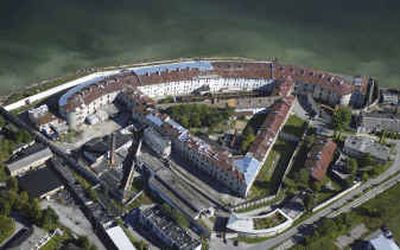Gulag lingers on in Baltic states

TALLINN, Estonia – Unlocked with huge skeleton keys, the cell doors at the 162-year-old Paterei Prison open with a piercing squeal and slam shut with deafening clangs that echo along cold, labyrinthine hallways.
The contrast between this jail in Estonia’s capital and those in the Nordic nations a short flight across the Baltic Sea couldn’t be starker: Nordic prisons are more akin to low-cost hotels — sparkling clean, well-ordered, equipped with all the modern conveniences.
Prison conditions in Estonia and the other two Baltic states, which joined the European Union on May 1, are raising concern among prison-reform advocates. Those advocates include many Baltic officials, among them Toomas Malva, the warden at Paterei.
“It’s so bad. You’re really in a 19th century prison,” he lamented while giving a tour of the seafront jail, which was built during Russian czarist rule in 1842 as a fortress and later turned into a prison.
Economically booming Estonia, Latvia and Lithuania are successfully closing the gap with old EU members in many ways, illustrated by their high-tech banking systems and advanced Internet infrastructures. New glassy skyscrapers just a few minutes drive from Paterei are monuments to the dramatic changes in Tallinn.
But prisons are some of the dreariest examples of where the Baltic states fall short of EU norms. Thirteen years after the breakup of the Soviet Union, the legacy of prisons operated more as labor camps, or gulags, lives on in Estonia, Latvia and Lithuania.
Baltic officials readily acknowledge the problem.
They point to the partial closure of Paterei as proof they are doing what they can as quickly as they can. Most of its inmates were recently transferred to the newly built Tartu Prison in southern Estonia. But Paterei still holds 130 inmates in a hospital ward.
“The Baltic states are in the process of moving on from the legacy of the Soviet gulag system,” said Andrew Coyle, who heads the London-based International Center for Prison Studies. “They’ve still got a long way to go, but they have begun the process.”
One worrying figure, Coyle said, is the imprisonment rate among the more than 7 million people of the three Baltic republics: 300 out of every 100,000 residents are behind bars. That is three times the average for the pre-expansion EU.
Prison authorities don’t try to defend the system inherited from the Soviet Union, which stressed long sentences and little chance for parole. But they say a lack of money and sometimes political will is hampering reform.
“The government seems to think the budget funds are more needed in other areas,” said Karlis Serzants, a spokesman for the Latvian Prison Administration. “It’s also a political issue, with many believing that an inmate shouldn’t lead a better life than a retiree.”
There’s not much danger of that in Baltic prisons. Many are overcrowded and ridden with disease. In some, the spread of drug-resistant tuberculosis and the AIDS virus is at epidemic levels; narcotics use and violence is rampant.
In 2002, HIV infections blamed on intravenous drug use hit nearly 300 of the 2,000 inmates at Alytus Prison in Lithuania.
Olavi Israel, a reform-minded Estonian warden, said the gulf between Nordic and Baltic jails became all too evident when he met an Estonian inmate during a recent visit to a prison in Finland.
“I asked him if they were treating him well and if he would like to come back to Estonia. He dropped his shovel and walked away. He avoided me for the rest of my visit,” said Israel, who runs the notorious Murru Prison, 30 miles west of Tallinn.
The reaction is easy to understand from inside Murru.
Built in the 1930s, it holds 1,600 inmates, half of Estonia’s prisoners. Up to 15 inmates can share a single, austere cell, giving each an average of 27 square feet of living space. EU standards recommend one inmate per cell, and where that’s not possible, at least 43 square feet of living space per inmate.